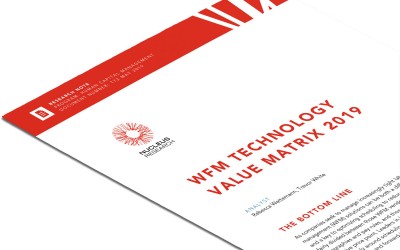Implementation Success for Workforce Management Software Hinges on Testing and Training

Your organization has decided it’s time to bite the bullet and purchase a new workforce management solution. You’re promised it will bring many process efficiencies for your scheduling and time and attendance needs while driving operational compliance. It’s safe to say your organization is not alone. Analysts predict that by 2025, 80% of large enterprises with hourly-paid workers will have invested in workforce management to support employee experience and digital workplace initiatives.
The focus of most software-as-a-service evaluation revolves around measuring feature sets against your current problem areas and finding a vendor you can see yourself working well with. However, implementing new workforce management software can be an expensive and time-consuming process, one that needs to be performed right to reap the benefits your organization seeks. Mercer’s ‘Journey to Digital HR’ paper found that up to 30% of HR tech implementation projects fail due to poor change management. There are two areas where most companies don’t always allocate enough time and effort to ensure a successful implementation of workforce management software, the first one being testing, which if done right can potentially lead to unfound issues that can be resolved before you go live. The second area is training to ensure you reap the benefits of effective adoption and use by your workforce.
As part of our webinar series, Groundbreakers, we are showcasing the success our customers have around the world when adopting workforce management software. The team at Boehringer Ingelheim shared with us how their business ensured implementation success by providing an effective testing and training process when implementing their WorkForce Time and Attendance solution.
Ensure there is a robust testing methodology before you go live
Sandra Mathew, Senor Principal Analyst at Boehringer Ingelheim, tested their WorkForce Time and Attendance before deployment and believed, with proper planning and the right tools, that testing can be productive and fun, “I believe that we are much better off to find defects during testing than after we go live. I tell my testing team to think outside the box and try and break the system,” she said.
In the webinar, Sandra shared her success with a testing phase and outlined seven key objectives of effective testing of a new workforce management solution, “For example, we found that having an effective defect management tool was key to our organization,” she said.
See All Seven Testing Objectives
Training should be comprehensive, convenient, and customized to the needs of each team
Implementing new workforce management software into your business can be an exciting time and drive tremendous results. Still, if your employees are not trained properly, then you will never reap the full benefits. Designing an effective training program can help improve the speed of user adoption. Training should be comprehensive, convenient, and customized to the needs of each team.
Nancy Kurdy, Time Administration Specialist from Boehringer Ingelheim, has trained over twenty thousand employees for time and attendance software. She believes it’s essential to segment your employees by role and how they will use the solution in order to tailor your training effectively.
“When you identify the types of employees and how they will utilize the time and attendance software, you can determine what training you will need to run by tailoring it to the employee type and how many training programs you will need to run,” Nancy said.
Nancy believes there are six critical areas that businesses should focus on when implementing effective workforce management software training. These include producing tailored training material, the time and delivery method of your training, and how to communicate to your employees during the implementation phase effectively.
See All Six Components For Effective Employee Training
If you’re looking to implement a workforce management software solution that can deliver a breakthrough employee experience in the cloud, no matter how unique your pay rules, labor regulations, schedules, and employee self-service needs are, check out the WorkForce Suite.
Discover More
Buyer’s Guide: The Tough Questions To Ask Your Potential Workforce Management Vendor
6 Essential Workforce Management Strategies for a Safe and Productive Return to Work
Workforce Management Technology Value Matrix 2019
In this Technology Value Matrix, Nucleus Research evaluates several workforce management solutions that can help organizations manage their workforce more effectively in 2019 and beyond.



